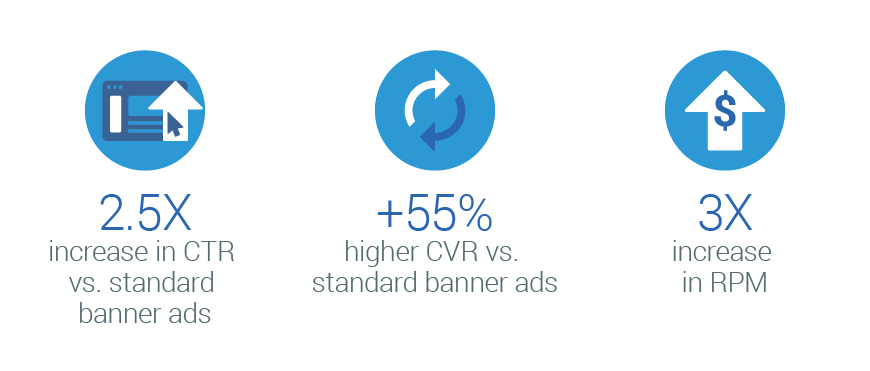From full-color photos to simple recipe instructions, HP knows different people use printers for different things. In order to boost ink and toner sales in a competitive market, the brand produced dynamic ads with creative tailored to specific audiences across India, Malaysia, and Australia.
GOALS
Communicate the superior quality of its products
Reach the right consumers in crucial "I-need-a-refill" moments
APPROACH
Used Audience Insights tool to identify 57 core audience segments
Built custom creative templates with creative agency
Executed programmatic media buy in Display & Video 360
Products used: Display & Video 360, Affinity Audiences, Studio
RESULTS
2.5X increase in click-through rate (CTR) vs. standard banner ads
+55% higher conversion rate (CVR) vs standard banner ads
3X increase in revenue per impression (RPM)
The Challenge
Every time “low ink” appears on a printer display, APAC consumers face a decision: either buy a refill from the official supplier or consider a generic alternative. HP Inc. wanted to make sure these consumers were choosing its ink and toner in these crucial I-need-a-refill moments.
Looking to differentiate itself from the competition and communicate the superior quality of its products in a meaningful way, HP turned to Google Marketing Platform1 to produce an innovative, data-driven campaign. Armed with tailored display creative and advanced audience targeting capabilities, the brand set out to reach potential customers with the right message at the right time.
The Approach: Identifying audience segments
First, HP and its media agency, PHD, set out to learn more about APAC consumers who had searched for ink and toner over the past 30 days. The team used Google’s audience insights tool to identify 57 core audience segments across India, Malaysia, and Australia. These segments included travel buffs, movie lovers, sports fans, and auto enthusiasts, among others. The programmatic media buy was then executed in Display & Video 360, leveraging third-party data from BlueKai, Google’s affinity segments, and lookalike models off of HP’s first-party data.
Serving relevant, personalized creative
PHD brought the audience data to HP’s creative agency, Gyro, where the team brainstormed key campaign visuals and messaging. Knowing HP wanted to connect with consumers on a personal level, Gyro developed different sets of creative to speak to each affinity segment.
Instead of leading with dry facts like product features, the display creative was tailored to individuals based on topics that really mattered to them. For example, photography-related creative was shown to shutterbugs, with the headline, “To capture the perfect landscape, it takes 36,000 drops of ink per second.” Food/cooking-related creative with the headline “Whether it’s a delicious family recipe, or an important business report … capture every detail perfectly” was served to aspiring chefs.
Instead of manually creating each of the ads, an automated feed in Studio meant dynamic banners were assembled in real time using the audience triggers from the planning stage. With so many options and themes, this led to a whopping 200 ad variations.
Personalized messages were shown to groups like photography enthusiasts.
PHD also worked to rigorously optimize the campaign. The media agency leveraged HP’s rich first-party data to identify customers who had previously bought ink and toner supplies from the brand, and retargeted them at key moments of the product’s lifecycle, encouraging them to repurchase with custom messaging.
The Result: HP captures clicks with dynamic ads
The team wanted to see how the data-driven creative performed against HP’s standard banner ads, so PHD set up an A/B test using the new Opportunities & Experiments tool in Google Marketing Platform. The results were beyond expectation.
The dynamic banners drove a 2.5X increase in CTR vs. the standard ads. Furthermore, the data-driven creative saw a +55% higher conversion ratio (CVR) than the standard banners, as well as a 3X increase in revenue per impression (RPM).

“Our data-led digital approach, powered by our agency’s differentiated planning philosophy, and a strong collaboration between our agency partners and Google, resulted in HP’s first-ever campaign featuring targeted dynamic creative,” said Joel Panugayan, head of marketing at HP. The campaign results exceeded both HP and industry benchmarks, resulting in the expansion of the campaign into five new markets.






